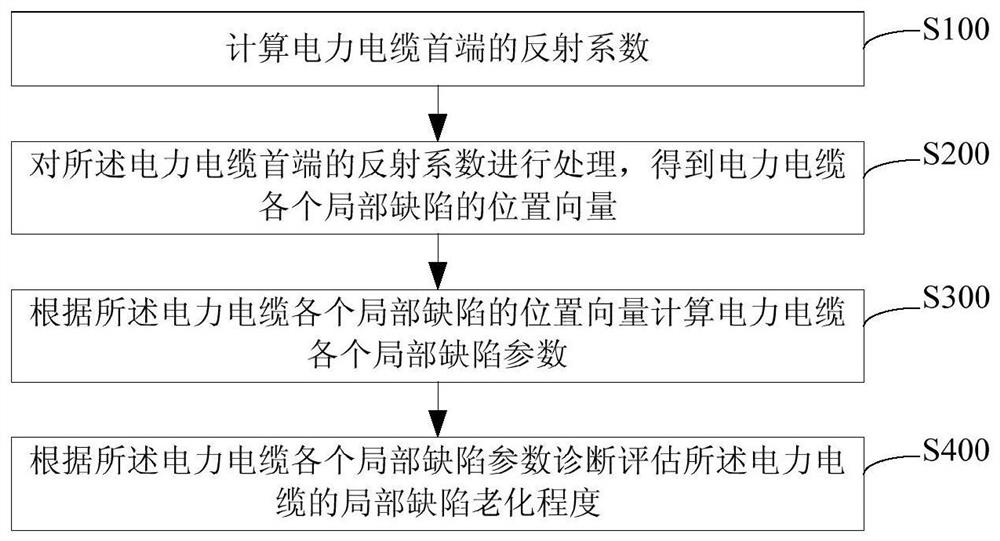Local defect aging diagnosis and evaluation method for power cable
A technology for local defects and power cables, applied in the direction of measuring resistance/reactance/impedance, measuring electrical variables, instruments, etc., to reduce the amount of calculation, reduce the difficulty of calculation, and improve the probability of successful calculation
- Summary
- Abstract
- Description
- Claims
- Application Information
AI Technical Summary
Problems solved by technology
Method used
Image
Examples
Embodiment 1
[0107] The power cable to be tested in this embodiment is a 1000m ZR-YJV02 8.7 / 15 3*95mm2 power cable, and a resistor with an impedance of 1kΩ is connected in parallel at a position of 300m.
[0108] In this embodiment, an Agilent E5061B vector network analyzer is used to test the input impedance of the head end of the cable under test.
[0109] The local defect aging diagnosis method for power cables provided by this embodiment, such as figure 2 shown, including the following steps:
[0110] S10, frequency domain parameter test calculation
[0111] Set the sweep frequency range of the vector network analyzer to [10kHz, 5MHz], set the number of sweep points N to 1001 and set the input impedance Z at the head end of the power cable in (f) Conduct the test and then calculate the reflection coefficient Γ at the head end of the cable in (f):
[0112]
[0113] Calculated cable head end reflection coefficient Γ in (f) if image 3 shown. Where f is the scanning frequency p...
Embodiment 2
[0127] The power cable to be tested in this embodiment is a 1000m ZR-YJV02 8.7 / 153*95 mm2 power cable, and there is a local weak defect with a length of 1m at a position of 400m.
[0128] In this embodiment, an Agilent E5061B vector network analyzer is used to test the input impedance of the head end of the cable under test.
[0129] The local defect aging diagnosis method for power cables provided by this embodiment, such as figure 2 shown, including the following steps:
[0130] S10, frequency domain parameter test calculation
[0131] Set the sweep frequency range of the vector network analyzer to [10kHz, 5MHz], set the number of sweep points N to 1001 and set the input impedance Z of the cable head end in (f) Conduct the test and then calculate the reflection coefficient Γ at the head end of the cable in (f):
[0132]
[0133] Where f is the scanning frequency point; Z 0 It is the characteristic impedance measured by using a 10m long reference cable of the same mode...
PUM
 Login to View More
Login to View More Abstract
Description
Claims
Application Information
 Login to View More
Login to View More - R&D
- Intellectual Property
- Life Sciences
- Materials
- Tech Scout
- Unparalleled Data Quality
- Higher Quality Content
- 60% Fewer Hallucinations
Browse by: Latest US Patents, China's latest patents, Technical Efficacy Thesaurus, Application Domain, Technology Topic, Popular Technical Reports.
© 2025 PatSnap. All rights reserved.Legal|Privacy policy|Modern Slavery Act Transparency Statement|Sitemap|About US| Contact US: help@patsnap.com



